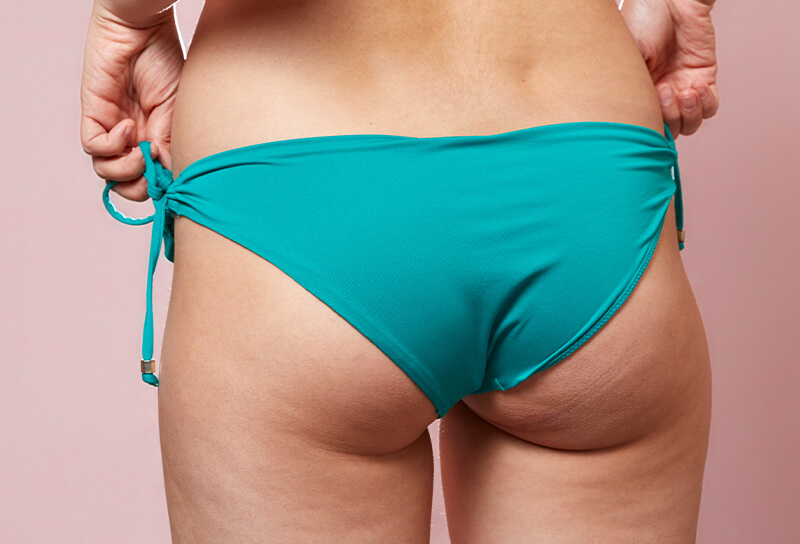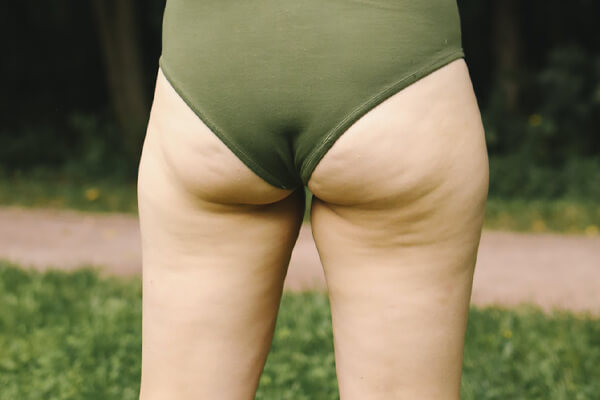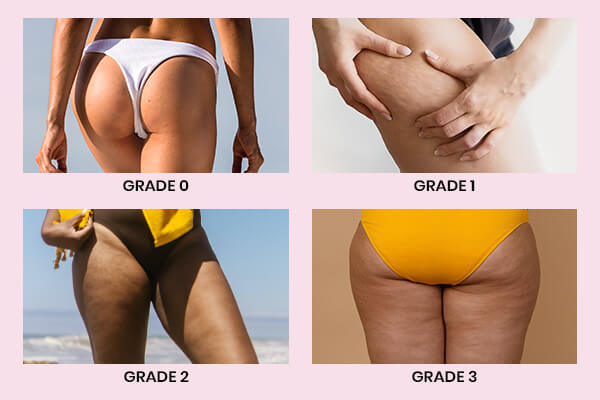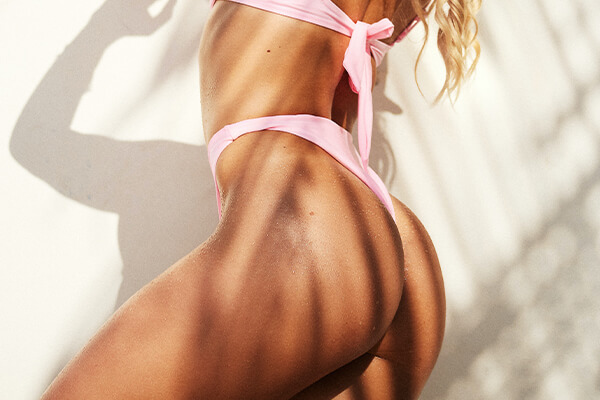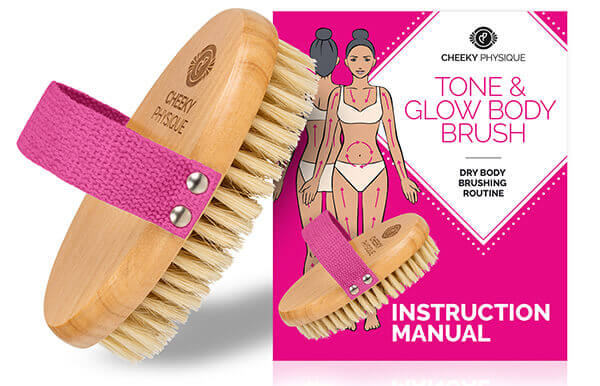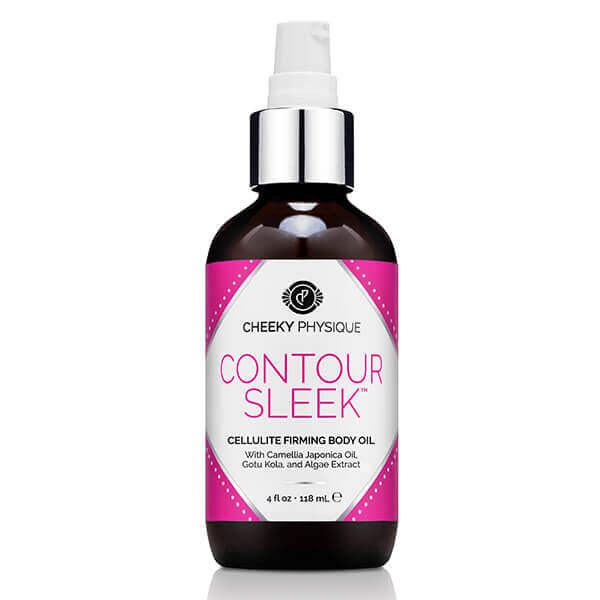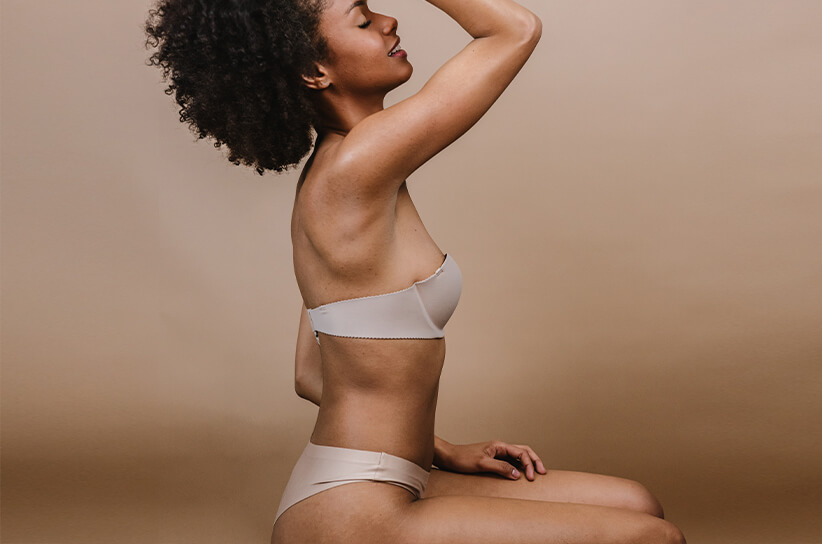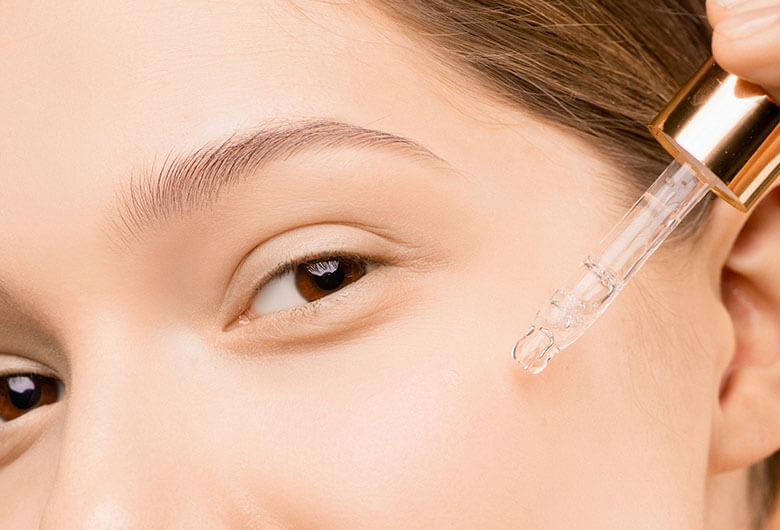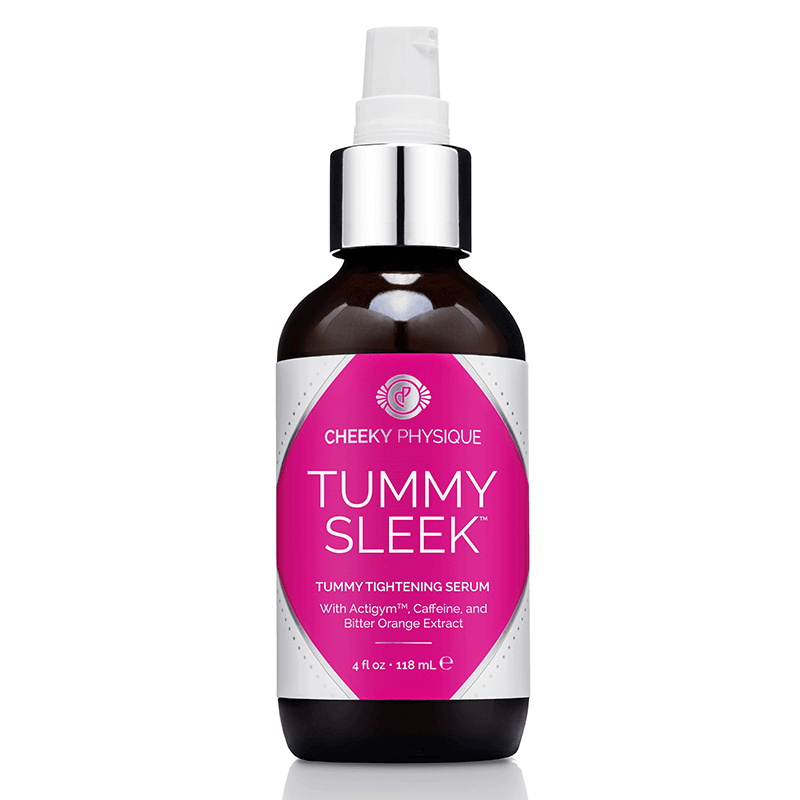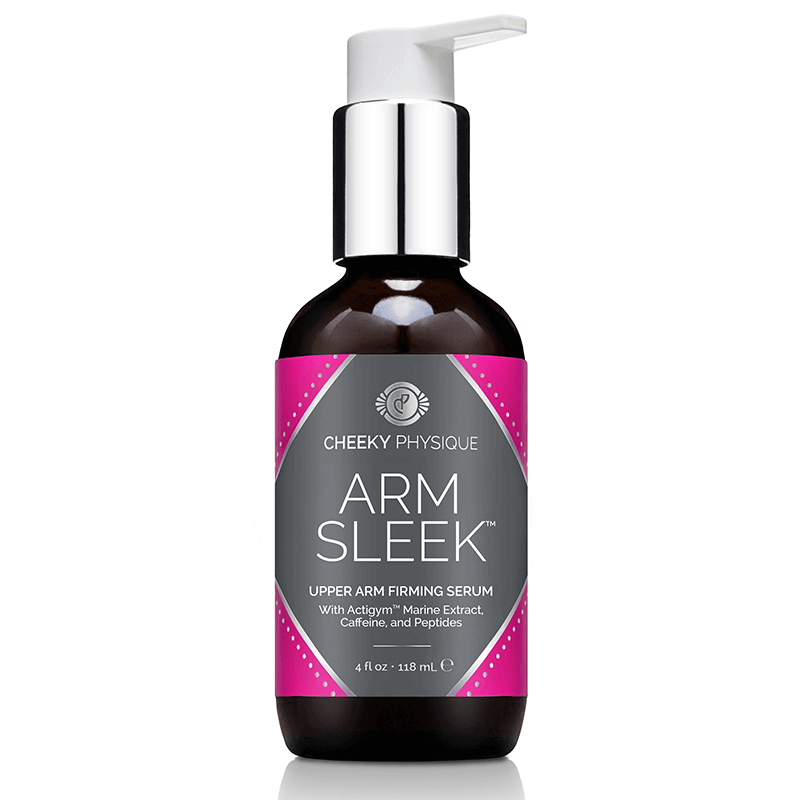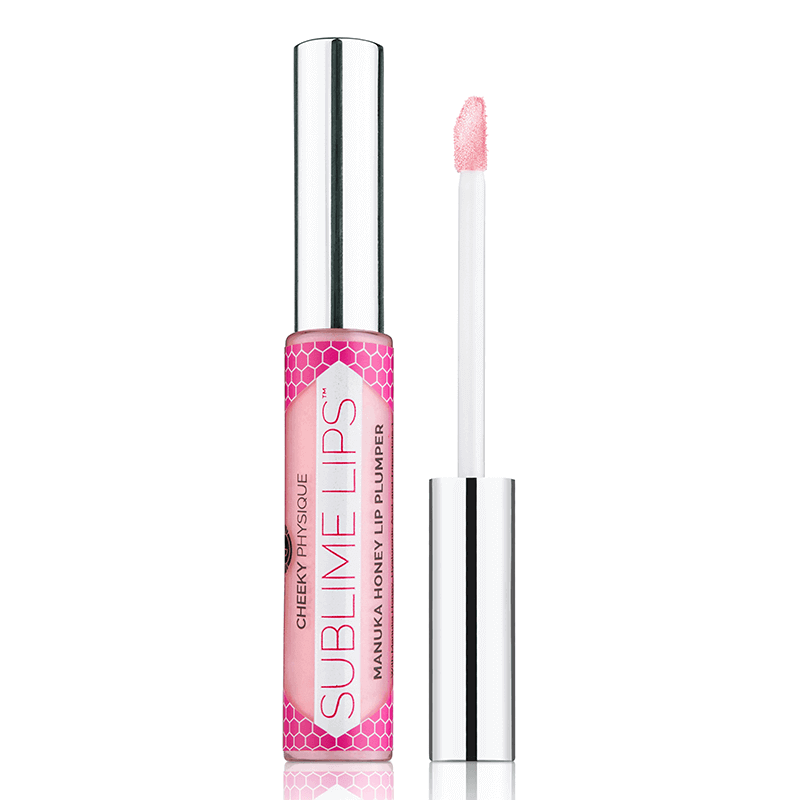This post looks at the 4 different cellulite grades, how to determine the type and grade of cellulite you may have, and how to treat it effectively.
Cellulite affects 90% of adult women! And while some women have it in excess, others are fortunate to have just a few dimples.
There are several variables that contribute to cellulite. So, it’s important to note that based on this, everyone has different cellulite-busting needs.
In this post, we look at the many forms and grades of cellulite to help you identify the level of cellulite you may have. We also look at the best techniques to minimize the appearance of these unwanted lumps and bumps.
What is Cellulite?
Cellulite is a common skin problem that causes the skin to appear lumpy or dimpled. It often shows up on the hips, thighs, buttocks, and stomach.
It’s important to remember that cellulite isn’t just extra fat, which is why women who are very thin or fit can still see lumps and bumps from cellulite.
Cellulite occurs when fat pushes against the bands of connective tissue (also called fascia) that hold the skin to the muscles. Cellulite is thus mostly caused by hardened connective tissue or adhesions in the fascia.
Cellulite can also be caused by a number of other factors such as genetics, hormones, poor diet, or a sedentary lifestyle.
Types of Cellulite
There are 3 types of cellulite, and it’s important to know which one you have so you can treat it properly.
Cellulite can affect different parts of the body in different ways. This means that you can have more than one type of cellulite.
Soft cellulite
As the name suggests, this type of cellulite is soft to the touch. Soft cellulite commonly occurs in areas where fat accumulates, like the legs, buttocks, and upper arms. It’s sometimes accompanied by varicose veins or spider veins.
Soft cellulite develops with age and/or weight gain and is exacerbated by a lack of muscle tone. This kind of cellulite is most frequent in women aged 30 to 40.
To effectively treat soft cellulite, you need to use more than one method. This type of cellulite can be greatly improved through a healthy diet, exercise, improved circulation, and proper skin care.
Hard cellulite
Hard cellulite occurs when the skin has a dimpled or pitted look and appears to be tightly bound to the muscle.
This type of cellulite is more common in younger women and can begin as early as puberty. The hips and upper thighs, as well as the back and inside of the knees, are the most afflicted areas.
Hard cellulite can be difficult to treat since it’s caused by tightly bound connective tissue and does not respond to diet and exercise. The best treatments include procedures that cut the connective tissue bands (such as Cellfina) or cupping therapy.
Edematous cellulite
Edematous cellulite, also referred to as “poor circulation cellulite,” is the least frequent type of cellulite and can be difficult to treat. It is caused by impaired blood circulation, which is exacerbated by fluid retention.
Edematous cellulite may affect the knees and thighs, but it most commonly affects the lower legs, which may swell. This type of cellulite can be sensitive to the touch.
Edematous cellulite treatment focuses on increasing blood circulation and decreasing fluid retention. Some effective techniques include compression stockings, lymphatic drainage, dry brushing, and cupping massage.
Grades of Cellulite
There are four different grades of cellulite, ranging from mild to severe. This grading system is used by professionals, including plastic surgeons, and it can help you choose the best treatment for your situation.
Grade 0 cellulite
There is no visible cellulite. Even when the skin is pinched, it still looks smooth. However, the structure of the dermis may be changing underneath the skin.
Grade 1 cellulite
The skin looks smooth when standing, but when pinched, it looks like an orange peel. Even though there may not be visible bumps and dimples, the skin looks paler and has less elasticity.
Grade 2 cellulite
This is a moderate grade of cellulite. Cellulite dimples are obvious when standing up, but they disappear when lying down.
Grade 3 cellulite
This grade of cellulite is the worst. Cellulite dimples are very easy to see both standing and lying down. Affected areas may also feel hard and painful.
How to Reduce Cellulite – Tips for Each Cellulite Grade
There are a variety of professional treatments available to help reduce cellulite. Many of these procedures are performed by plastic surgeons or med spas and can cost thousands of dollars. Some of the latest cellulite treatments include Qwo, Cellfina, Cellulaze, Emtone, and Sculptra.
However, the best option for getting rid of cellulite is to simply make a lifestyle change. A combination of diet, exercise, and proper skincare is the most effective approach to fighting cellulite.
Here are specific treatment recommendations for each cellulite grade:
Grade 0 cellulite treatment
No specific treatment is needed for this grade – lucky you! Follow the guidelines for Grade 1 to prevent cellulite.
Grade 1 cellulite treatment
- Dry brush daily
- Be mindful of your diet
- Try to stay active
- Drink plenty of water
Grade 2 cellulite treatment
- Dry brush daily
- Add cellulite cupping massage 2-3 times per week
- Watch your salt, sugar, and alcohol intake
- Do regular cardio/toning at least 3x per week
- Drink plenty of water
Grade 3 cellulite treatment
- Dry brush daily
- Apply cellulite oil or serum daily
- Add cellulite cupping massage 3-5 times per week
- Avoid salt, sugar, and alcohol intake
- Eat a clean, anti-inflammatory diet
- Do regular cardio/toning at least 3x per week
- Drink plenty of water
Essential Skincare Products for all Cellulite Grades
No matter how severe your cellulite might be, the great news is that you can take action and dramatically reduce the appearance of those unwanted lumps and bumps.
Here at Cheeky Physique, we’ve crafted an entire collection of skincare products and tools designed to target cellulite. Use these along with the plan outlined above to firm and smooth your curves and regain your body confidence.
Tone & Glow Body Brush
This premium natural bristle body brush reduces the look of cellulite by stimulating circulation and lymph flow while firming the skin’s appearance. Shop the Tone & Glow Body Brush here.
Cheeky Cups Body Contouring Kit
Based on ancient cupping techniques, Cheeky Cups work like a deep tissue “reverse massage” to boost circulation, release fascia adhesions, and smooth the appearance of cellulite. Shop Cheeky Cups here.
Contour Sleek Cellulite Firming Body Oil
Boost the benefits of dry brushing and cupping with this firming body oil packed with natural detoxifying ingredients. Shop Contour Sleek here.

